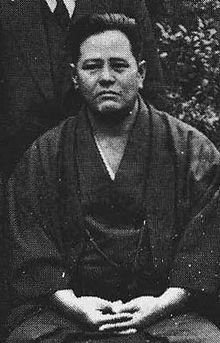History of Meibukan Karate
Amherstburg karate club
Goju-ryu
Gōjū-ryū-
In Okinawa, Japan, Goju Ryu Karate is one of the most popular styles of karate. It was founded by Chojun Miyagi in the early 1900s. Goju Ryu Karate has gained widespread popularity and influence beyond Japan since its introduction by Chojun Miyagi. The teachings of this system have been embraced by martial arts enthusiasts worldwide. A truly global martial art, Goju Ryu Karate is practiced by people of all ages and backgrounds.
Gōjū-ryū (剛柔流), Japanese for “hard-soft style”, is one of the main traditional Okinawan styles of karate, featuring a combination of hard and soft techniques. Both principles, hard and soft, come from the famous martial arts book used by Okinawan masters during the 19th and 20th centuries, the Bubishi (Chinese: 武備志; pinyin: Wǔbèi Zhì).[2] Gō, which means hard, refers to closed hand techniques or straight linear attacks; jū, which means soft, refers to open hand techniques and circular movements. Gōjū-ryū incorporates both circular and linear movements into its curriculum, combining hard striking attacks such as kicks and close hand punches with softer open hand circular techniques for attacking, blocking, and controlling the opponent, including joint locks, grappling, takedowns, and throws.
Major emphasis is given to breathing correctly in all of the kata but particularly in the Sanchin kata which is one of two core kata of this style. The second kata is called Tensho, meant to teach the student about the soft style of the system. Gōjū-ryū practices methods that include body strengthening and conditioning, its basic approach to fighting (distance, stickiness, power generation, etc.), and partner drills.
Chōjun Miyagi
Was a Okinawa martial artist who founded the Goju-ryu school of karate by blending Okinawa and Chinese influences

| Date founded | c.1930 |
|---|---|
| Country of origin | Okinawa (Japan) |
| Founder | Chōjun Miyagi (宮城 長順), 1888–1953) |
| Arts taught | Karate |
| Ancestor schools | Naha-te • Fujian White Crane (Whooping Crane style) |
| Descendant schools | Kyokushin[1] • Iss |
Meibukan
Meitoku Yagi

Meitoku Yagi (八木明徳 Yagi Meitoku, born March 6, 1912, in Naha, Okinawa – died February 7, 2003) was a karate master and teacher. He learned Goju-ryu from its legendary founder Chojun Miyagi. On April 29, 1986, Emperor Hirohito named Yagi a Living National Treasure (ningen kokuho) for his contributions to the martial arts
Meibukan (明武舘) is a branch of Gōjū-ryū karate. It was created by Meitoku Yagi, a student of Goju-ryu’s founder, Chojun Miyagi. Meibukan means “House of the pure-minded warrior.”
Yagi began training under Miyagi when he was 14 years old. Miyagi was impressed by his dedication and hard work, and eventually taught him all the kata in the Goju-ryu syllabus. Normally, Miyagi would only teach Sanchin to his pupils for several years, and even then he might only teach them Seisan and Seiunchin. To complement his karate training, Yagi enjoyed many activities including shodo, playing the piano and shamisen, and chinese chess.
A year before Miyagi’s death in 1953, Yagi opened his own dojo in the Daido district of Naha. He named his school of Goju-ryu Meibukan, meaning “house of the pure minded warrior.” The name and crest of his school both utilize the first kanji in his given name, 明 (Mei), which has several meanings, including purity. It is made up of the kanji for sun and the kanji for moon, reflecting the duality of nature, which is inherent to Goju-ryu. Today, the main headquarters for the Meibukan school are in the Kume district of Naha. Yagi’s number one goal was for his students to promote peace, be good people and contribute to society.[1]
Meitoku Yagi began developing a series of kata in the 1970s and 1980s, which he named Meibuken kata. The first of which is Tenchi, meaning “heaven and earth.” It was originally two kata, Fukyu Kata Ichi and Fukyu Kata Ni. The two kata can be put together so that if two karateka were to perform each half an attack in the first kata would correspond with a block in the second, for example. The Meibuken kata are different from the kata in the Goju-ryu syllabus in many ways, including having vertical closed hand chambers, and having a different yoi position, reflecting Yagi’s Chinese roots, and his time spent studying martial arts there.
One of the biggest mental benefits of martial arts is its ability to improve self-esteem and boost confidence.
Follow Me:
320 Richmond St. (Amherstburg Community Services building) Amherstburg, ON N9V 1H4